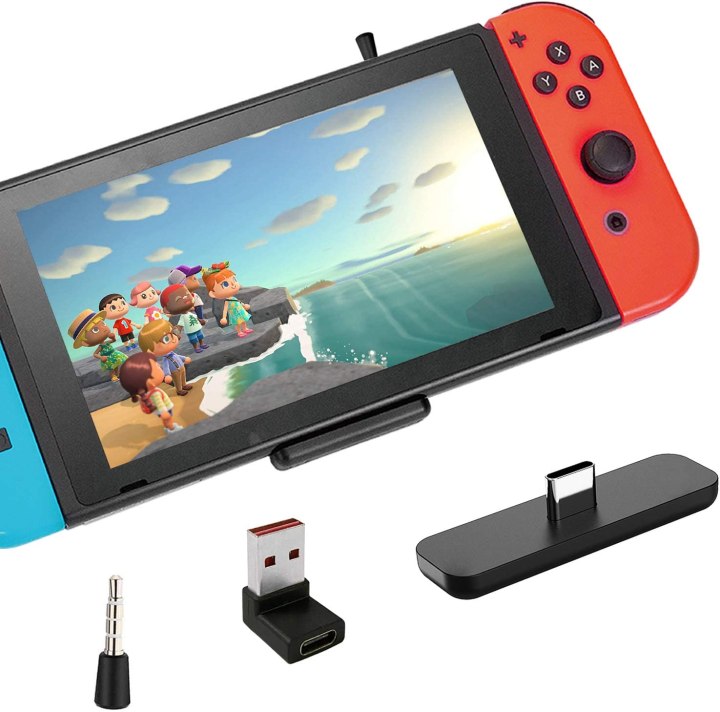The Nintendo Switch is one of the most popular consoles in history. Since its release in 2017, it has sold nearly 85 million units, with several of its bestselling games reaching over 20 million copies shipped. There are plenty of reasons for the system’s success, whether it’s the fantastic lineup of games, its versatility, or how approachable the handheld hybrid is.
Despite this, the system is not perfect. No system is, but the Switch in particular lacks many features you’d expect from a modern console. Evidently, the lack of these features doesn’t seem to have impacted sales much, but many of its omissions are still hard to ignore. Given we’re over four years into the system’s life cycle, it’s unlikely all of its missing features will be addressed.
The new Nintendo Switch OLED model actually fixes some of the initial complaints with the original version, which is certainly a step in the right direction, but there are lots of improvements to be made still. Here are eight key features the Nintendo Switch is still missing that the OLED model doesn’t address.
Customizable home screen

One of the most requested Nintendo Switch features is the ability to customize the home screen with folders and different themes. From day one, fans expected these basic features to be added, but four years later, they’re nowhere to be found. What’s odd is the 3DS had many home screen customization options, from fancy themes based on Nintendo games to the ability to create folders.
With as many games as are available on the system, it’d be nice to have the option to organize them, which was a handy 3DS feature. The omission of themes, which change the look of the home screen, is particularly baffling. Nintendo of all companies could get away with charging a few bucks for themes based on its franchises. It’s unclear why they still haven’t been added considering fan demand, but we can confidently say we’re tired of looking at the same black and white default screen available on the system now.
Better discoverability on eShop

The Nintendo Switch eShop is severely lacking when it comes to discoverability. Searching the storefront has improved substantially since launch, but it’s still a rough experience. The biggest issue is that games are presented in an overwhelming visual way, making it hard to find what you’re looking for. As of now, games are simply listed sequentially, which can be hard to browse.
The eShop could use a user rating system too, so it’d be more clear which games are worth players’ time. While this wouldn’t be the end-all and be-all, it would definitely increase discoverability, especially for smaller indie games. It could borrow the rating system from Steam or other storefronts that work well, which would improve the overall browsing experience.
A “recommended for you” section that suggests games based on what you’ve played or purchased before would be another nice touch. If not that, perhaps more detailed search filters would solve some problems. While you can search for games via genre, the parameters aren’t always specific enough. And why isn’t there an option to add multiple items to your cart? The Nintendo Switch digital storefront feels outdated and it’s puzzling why it hasn’t been completely overhauled by now.
Key media apps

This point is a controversial one, but the Nintendo Switch should have more media apps. Sure, it’s a gaming device first and foremost, but it seems odd to omit key media apps like Netflix, Disney+, HBO Max, and Spotify in 2021. It’s even stranger that Hulu is actually available on the system, so the lack of others feels even more out of place.
Nintendo likes to do its own thing, and we appreciate that, but leaving out media apps just doesn’t make sense when they were even included on the Wii U.
Bluetooth support

This is a big one. Why the Nintendo Switch doesn’t have Bluetooth support is anyone’s guess and it’s a huge blow to the system. Given its prominence as a leading handheld device, having to carry around wired headphones or a receiver to allow for wireless connectivity is less than ideal. As we covered in our guide to using AirPods on Nintendo Switch, it’s certainly possible to wirelessly connect a headset to your system, but it’s not the most elegant solution — you need a third-party peripheral to make it work.
The main issue has to do with the receiver itself. When you plug it in via USB-C, it takes up your only port. That means you can’t charge your system while the receiver is in. For a system that boasts its portability, having to bring an extra device with you isn’t the best look. It also disallows the ability to utilize your system in tabletop mode, which is just another hurdle that gets in the way.
Improved voice chat solution

To be frank, Nintendo’s solution to voice chat is atrocious. As it stands, you have to use the Nintendo Switch Online app on a phone to talk with other players while you play. It’s no different than utilizing Discord or another third-party app, so why even bother with this method at all? Even the Xbox 360 had built-in voice chat, so it’s confusing why Nintendo chose this route.
What’s strange is that Fortnite actually has native voice chat on Nintendo Switch, meaning the system is more than capable of pulling it off. It’s likely something to do with safety since the Nintendo Switch is a family device — but even still, the company’s backward approach to online play is hard to get behind. There are certain qualities that are just standard in consoles nowadays and built-in voice chat is one of them.
An achievement/trophy system

Microsoft’s achievement system and Sony’s trophies are a fun way to get more mileage out of games. If the achievement lists are done right, they can offer a fair challenge that feels satisfying to overcome. That same logic could apply to games on Nintendo Switch. We’d love to go through all of our favorite Switch games to hunt for achievements that we could then share with our friends. Collect all the moons in Super Mario Odyssey, or complete all Shrines in Breath of the Wild? That sounds like a no-brainer!
Sure, achievement hunting may not be worth it to some players, but to others, it’s a great metagame that adds to the replay value while letting them show off their accomplishments. It’s not necessary, but an achievement system could add a longer lifespan to some of our favorite Switch games.
Virtual console (or something similar)

Arguably one of the most requested Switch features is a Virtual Console equivalent where players can buy old games. Sure, the system has its Nintendo Switch Online service, but it’s no alternative to a full retro storefront. The Virtual Console on Wii, Wii U, and 3DS allowed players to buy many older Nintendo games from the NES area, to the SNES, and beyond. Without getting too far into the weeds of game preservation, Nintendo has often been criticized for the way it handles its legacy products and the lack of a Virtual Console on Switch is proof of that.
How great would it be to be able to boot up your Switch to play each first-party release from the NES all the way to the Wii? Microsoft figured out a way to do just that with its Xbox Series X system thanks to its stellar backward compatibility solution. From a business perspective, it doesn’t make much sense to neglect older games, especially if fan demand for them is so high. With over 85 million Switch consoles in the wild, it’s a safe bet older games would sell well on Switch.
A fix for Joy-Con drift

It’s incredible that Nintendo still hasn’t fully solved its Joy-Con drift issue. How this happened in the first place is something we’ll likely never know the full details about, but it’s a problem that should have been addressed right away. To succinctly summarize Joy-Con drift, this is when the controller’s analog stick registers movement without you touching it, making it difficult to play. It can also work in reverse, wherein the stick won’t register inputs at all.
Even the Nintendo Switch Lite suffers from the same issue, though it’s much worse since you can’t replace its Joy-Con. The issue is so bad that Nintendo was actually sued in 2019, leading to an apology from company president Shuntaro Furukawa. Even in 2021, Joy-Con drift still persists, with players having to send their controllers back to Nintendo for repairs. Out of all the issues on this list, Joy-Con drift is one that negatively impacts how we play and should be of the utmost priority for Nintendo to address.



